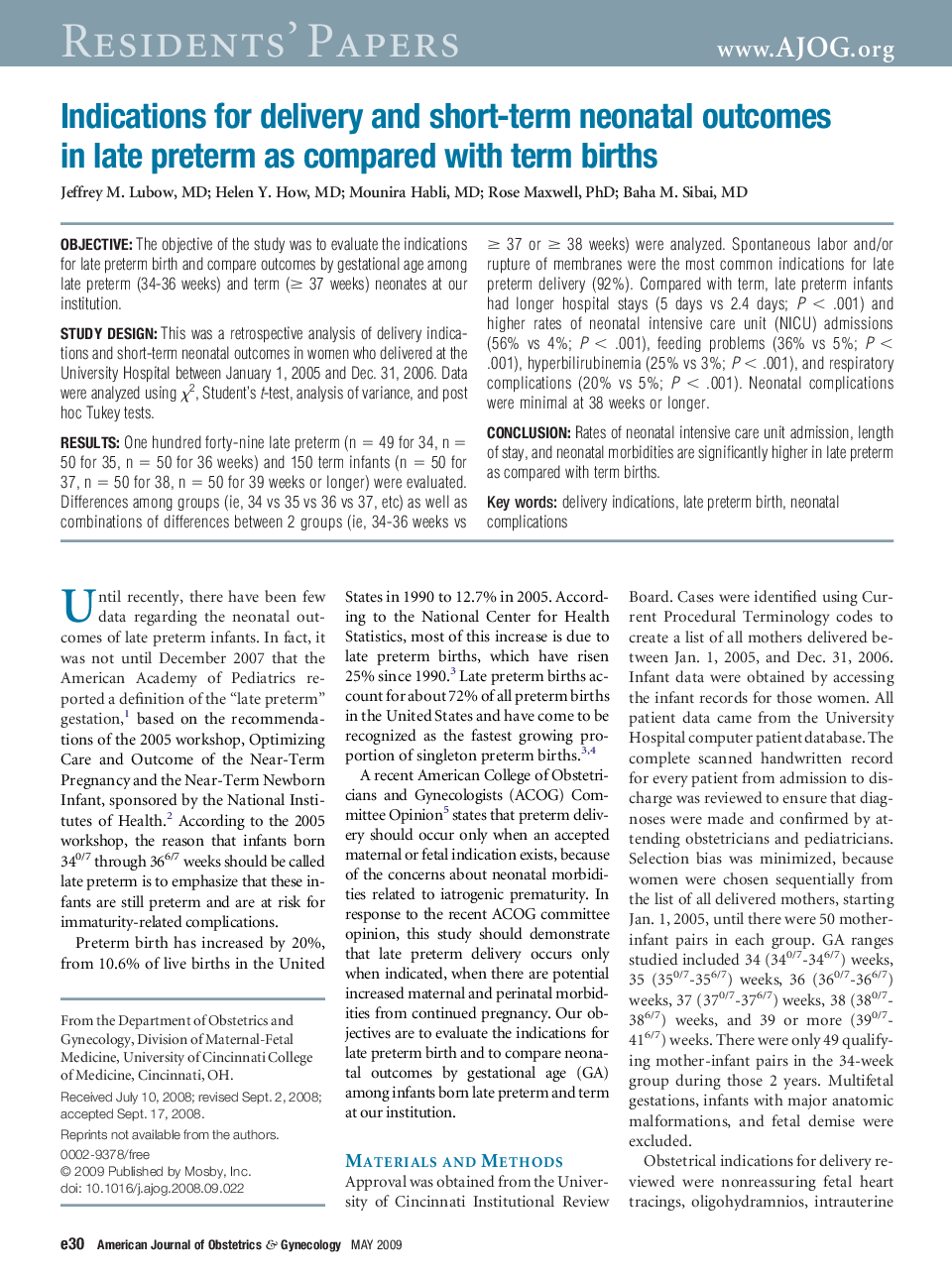| Article ID | Journal | Published Year | Pages | File Type |
|---|---|---|---|---|
| 3437416 | American Journal of Obstetrics and Gynecology | 2009 | 4 Pages |
ObjectiveThe objective of the study was to evaluate the indications for late preterm birth and compare outcomes by gestational age among late preterm (34-36 weeks) and term (≥ 37 weeks) neonates at our institution.Study DesignThis was a retrospective analysis of delivery indications and short-term neonatal outcomes in women who delivered at the University Hospital between January 1, 2005 and Dec. 31, 2006. Data were analyzed using χ2, Student's t-test, analysis of variance, and post hoc Tukey tests.ResultsOne hundred forty-nine late preterm (n = 49 for 34, n = 50 for 35, n = 50 for 36 weeks) and 150 term infants (n = 50 for 37, n = 50 for 38, n = 50 for 39 weeks or longer) were evaluated. Differences among groups (ie, 34 vs 35 vs 36 vs 37, etc) as well as combinations of differences between 2 groups (ie, 34-36 weeks vs ≥ 37 or ≥ 38 weeks) were analyzed. Spontaneous labor and/or rupture of membranes were the most common indications for late preterm delivery (92%). Compared with term, late preterm infants had longer hospital stays (5 days vs 2.4 days; P < .001) and higher rates of neonatal intensive care unit (NICU) admissions (56% vs 4%; P < .001), feeding problems (36% vs 5%; P < .001), hyperbilirubinemia (25% vs 3%; P < .001), and respiratory complications (20% vs 5%; P < .001). Neonatal complications were minimal at 38 weeks or longer.ConclusionRates of neonatal intensive care unit admission, length of stay, and neonatal morbidities are significantly higher in late preterm as compared with term births.
